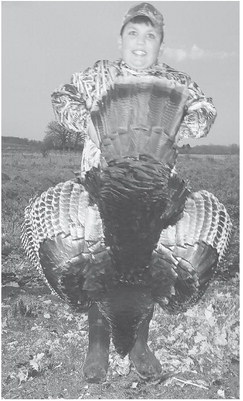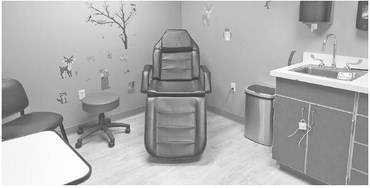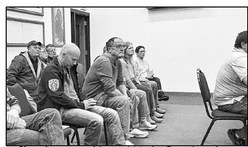COUNTY DEER COUNCIL - Council backs off on doe permits in Taylor County


COUNTY DEER COUNCIL
Mirroring the somewhat surprising drastic drop in deer harvest by hunters in 2023 and an adjusted post-hunt population estimate that is down about 8,500 from a year ago, Taylor County’s Deer Advisory Council on Tuesday night recommended reducing antlerless permit availability within the county for the fall hunting season.
The council’s recommendation that is going to the Department of Natural Resources and the Natural Resources Board for review calls for an antlerless harvest quota of 1,100 deer on private lands. Figuring for a 20% success rate, the council is recommending making 5,500 private-land tags available to the public.
Last year’s quota was 2,300 with 8,520 available permits.
Public-land permits again figure to be quite scarce. The council lowered its recommended harvest quota on those lands to 50. Again, using a 20% success rate, 250 is the recommended permit level for 2024.
Last year’s public-land quota was 125 with 595 permits being made available.
The public-land numbers were approved on a 6-1 vote, while the private-land numbers passed 5-2 after an initial proposal that included a quota of 1,500 with 7,500 available tags failed 4-3.
DNR wildlife management liaison Derek Johnson, who is now the DNR biologist covering Taylor and Price counties, supported the recommendations at the end of Tuesday’s two-and-a-half hour meeting at Medford Area Senior High.
“As far as the recommendation, it’s pretty prudent especially with the uncertainty of how this fall will go and where that number is actually going to go,” Johnson said. “We could have the exact same buck harvest, which I think is a pretty good scenario based on going back a few days but then having a mild winter that kind of eats up that expected loss in buck harvest. That’s what I’m hoping things come out to that we have a pretty similar buck harvest to last year.”
Johnson said 2024 will be a year of uncertainty and Taylor County hunters probably should have tempered expectations. Buck harvests are a primary indicator of herd size in the DNR’s population modeling and the overall buck registration totals in the county dipped from 3,114 to 2,234 in 2023, a drop of 28.3%. The antlerless harvest, despite 7,738 private-land tags and all of the publicland tags being sold also dropped 32.4% from 3,060 in 2022 to 2,068.
This happened despite excellent hunting weather during the nine-day gun deer season.
In turn, this year’s post-hunt population estimate for Taylor County is 25,967 compared to 34,547, which now appears to have been a miscalculation.
Johnson said there will be two keys this fall. First, after the winter severity index was just nine with its combination of days with below zero temperatures and snow depths over 18 inches, the health of the deer herd should be excellent going into the fawning season and the summer months. However, this year, the nine-day gun deer season falls back to its latest possible starting date of Nov. 23. Historically, records show that bump backward has always led to a noticeable drop in buck and overall deer harvests from the previous year.
“This year is funky,” Johnson said. “We could see a buck harvest decline again even if there’s more deer on the landscape. We could see a buck harvest decrease. That’s what I want to prepare everybody for. That’s because of the late start. It’s not because the deer aren’t there. It’s because the activity is down. The weather might be worse, all that kind of stuff.”
The discussion on quota and permit setting started with public lands and Brian Bucki, now listed as the council’s hunt/conservation club representative, proposed a zero antlerless quota stating that it’s his belief public-land deer are being hit hard from predation, primarily from wolves.
“I would like to propose a zero quota and it’s all based on what the CDACs are expected to do here,” Bucki said. “We all agreed to increase the population on public land three years ago. It’s been on a steady decline. Like Derek said, our best indicator is our buck harvest. If you look at the buck harvest the last five years, I can’t go back far enough into the record books to find five lower years. We bottomed out at 319 last year, lowest ever as far as I can tell. Before that, it was 416, 403, 395, 371. Even after that severe winter where there was not much left, we still came up with 409 bucks, so we’re 100 below that severe winter yet.
I don’t think we’re doing our jobs if we do anything else but zero.”
Bucki wound up being the only no vote on the publicland recommendations, but the council was unanimous in its belief the quota and tag numbers needed to be reduced.
However, chairman Mike Riggle floated the thought that part of the reason public-land harvest numbers are down is because the hunter numbers are down. The question is where does the vicious cycle start, with reduced deer numbers or reduced hunters.
“I was a big proponent of public and private land tags,” Riggle said. “I’m afraid that one of the things we’ve created by limiting public land tags is we have driven many, many hunters out of the public land. I think part of what may be leading to the lack of hunters out on the public land is the fact that they can’t have a doe permit in their pocket. Not that we should give everybody a doe permit.”
Kurt Haas, Taylor County’s DNR conservation warden, said as he has in past years, enforcement issues continue to exist with hunters using their private-land authorizations for Taylor County or free farmland tags from Marathon and Clark County on public-land deer, particularly in the Chequamegon-Nicolet National Forest.
“I see that all the time,” Haas said. Several in the audience, however, felt public-land hunters are getting punished with the low permit levels and their opportunities are being reduced. It forces some hunters to be less selective with bucks or it’s frustrating for those who hunt near public/private boundaries, where deer numbers are typically better than the middle of the forested land, to see deer legally being able to be harvested across the fence, so to speak, from where they can’t be.
“I think you’re taking away a tool,” said Peter Anderson, the council’s new foresty representative. “Once you lose the hunters, you’re not fixing anything. I think you’re tying hands that don’t have to be tied. If you keep taking away public rights to harvest deer, they’re going to do it anyways and it’s going to make criminals.”
“We’re supposed to be on an increase. That’s our job,” transportation representative Scott Mildbrand said. “I think the evidence points to the fact that we need to issue less antlerless tags. I think not only the public land antlerless tags need to go down, but I also think the private land tags do as well. I think that we’re minus 25% and I think that we have to reflect that as far as how many antlerless tags we issue.”
The DNR will take the first look at CDAC recommendations with the Natural Resources Board getting the final say in June.
During the online public survey period in early April, there were 202 total responses for Taylor County with 194 being considered complete responses. Of those, 75 felt a lower antlerless quota was warranted for the county while 104 thought it should stay the same and 22 wanted higher quotas. Similarly, 64 wanted to see lower permit numbers for private land, 101 wanted numbers to stay the same and 29 wanted them to go higher. For public land, 84 wanted to see permit levels go down, 72 wanted them to stay the same and 29 wanted them to be increased.




